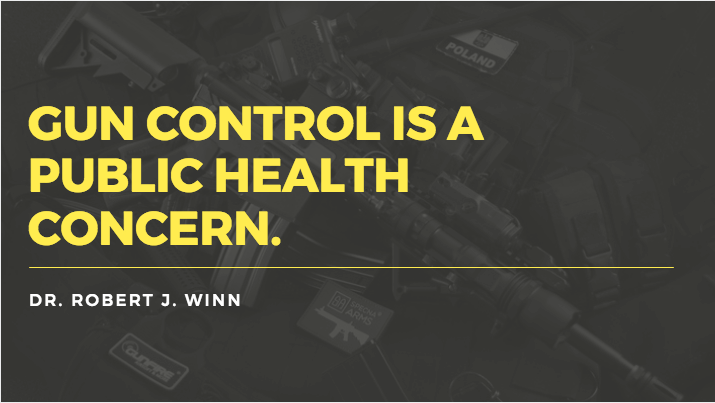Since the tragic shooting at Columbine, the US has lived through some of the worst acts of domestic terrorism that the developed world has ever seen. From schools to churches to concerts to clubs to army barracks, many places formerly believed to be safe community spaces have been targeted by shooters seeking to inflict mass pain and panic. With the death toll of these shootings still rising and little done in the US legislature to prevent such harrowing catastrophes from happening again, many scientists and public health researchers are calling for funding to better study the proliferation of gun violence and mass shootings. The spread of violence very much mimics the spread of disease, and to that end, researchers want the money to study the spread of gun violence like the public health epidemic it is.
In 2013, Gary Slutkin gave a TED talk on this very subject. After 10 years of experience quelling epidemics of TB, cholera, and AIDS throughout Africa in tandem with the WHO, Slutkin returned to the US to find similar epidemics of gun violence sweeping the nation. He took time to study the way the violence spread, particularly among youth. The status quo remedies, including most notably punishment by means of incarceration, were doing little to deter young people from engaging in violence that turned dangerous or lethal when firearms were folded into the equation.
Slutkin and others began to investigate the spread they way they studied epidemics. They started by trying to determine predictors of violence, and much like the flu, the best predictor of violence was a preceding case of violence. He also looked into ways to contain the violence and stop it from spreading. Finally, Slutkin called for a shift in the way we educate people and structure our society to proactively prevent violence from showing up in the community. From education to training professionals in the community and more, the “epidemic” approach has helped see violent crime cut in half.
Still, though, funding for further research and training is hard to come by. For one, investors in private prisons have a stake in the continuance of the “punishment” method, as that will help them see an increase in their ROI. In addition, groups like the NRA grow nervous that any action to quell gun violence will infringe on their second amendment rights to keep and bear arms. In 1996, a Congressional amendment to a budget bill forbade the CDC to use any funds to advocate for gun control in any capacity and reduced the CDC’s budget by the exact amount used to research gun-related violence. Since then, it has been incredibly difficult for the CDC to find funding to study gun deaths and publically suggest ways to reduce them.
In terms of solutions, many grassroots efforts have taken to “clinical trials” of behavioral therapy and the like to stop the spread and treat “patient zero” before they commit an act of violence. In Chicago, often held up as the dismal example of violence gone unchecked, school districts have begun teaching the most vulnerable students, young men, how to think through their actions and consider long-term implications of their behavior before resorting to violence. In this program, called Becoming a Man (or BAM for short), young men are lead through exercises that help them practice mindfulness and patience in stressful situations. That way, a misunderstanding doesn’t turn deadly. However, once again, they’ve received little funding or media attention.
The push for more research into gun violence as a public health issue is an urgent but uphill one. While it’s clear that preventative measures similar to those used for ending epidemics help, there are a lot of roadblocks in the way of a researched path forward.


